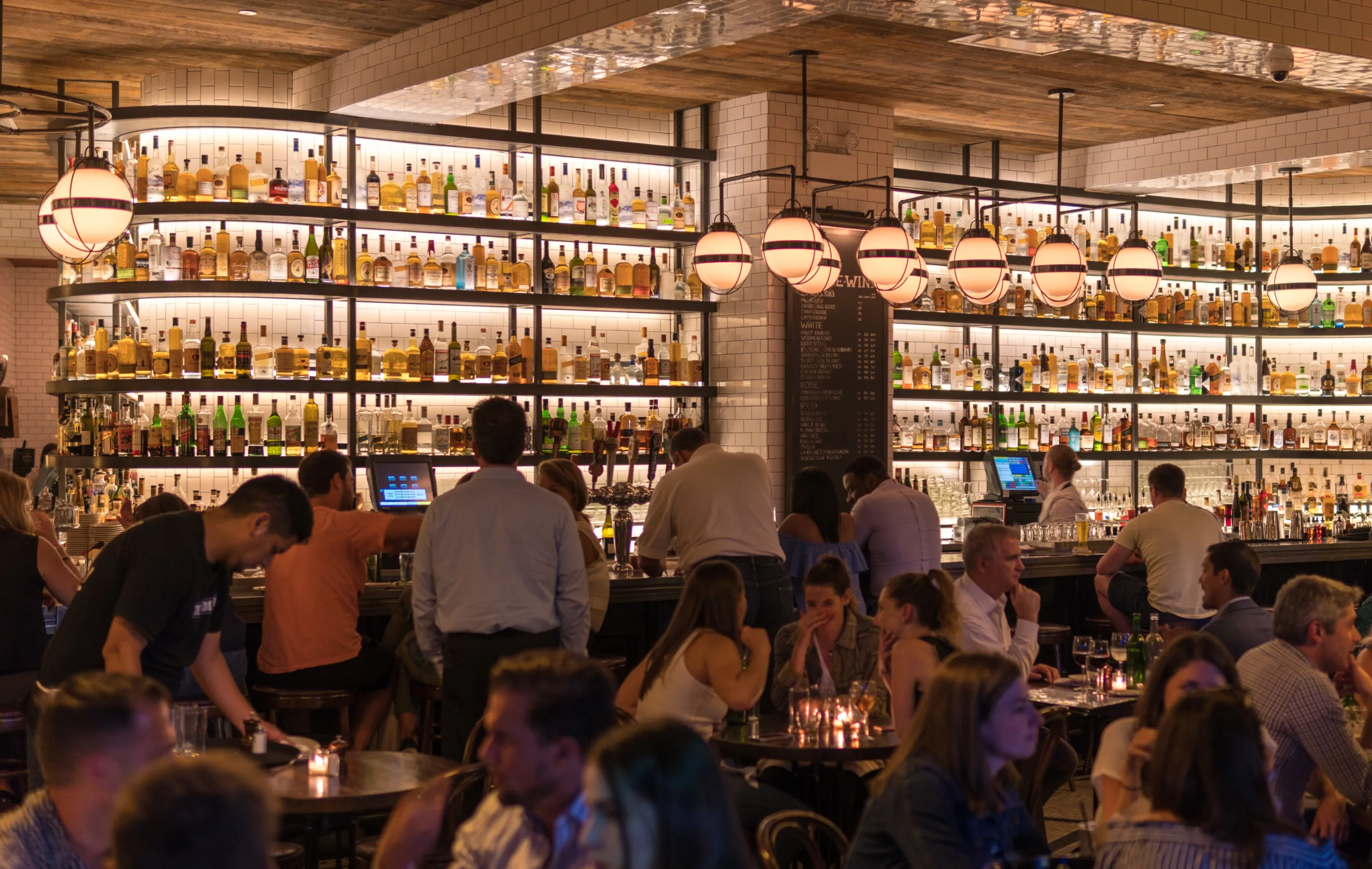Table of Contents:
- Introduction: A City in Love with Itself
- Metropolis by Marcus Samuelsson: A Gleaming Ode to New York
- Tatiana by Kwame Onwuachi: Culinary Communion Amidst Communal Celebrations
- Clara at the New-York Historical Society: A Culinary Identity in Flux
- Torrisi: Crafting Culinary History in the Heart of Little Italy
Introduction: A City in Love with Itself
New York, a city adorned with confidence, bodegas, and the relentless spirit of its inhabitants, stands as a testament to self-love. Despite oversized rats and a mayor straight out of a comic book, the city’s residents possess an unparalleled affection for their urban haven. Post-lockdown, the very act of declaring love for New York has become a defining characteristic of the post-pandemic era, finding its expression in the city’s vibrant culinary scene. As restaurants reopen their doors, they vie for attention by referencing the city itself. But in this sea of declarations, how profound are these love letters?
Metropolis by Marcus Samuelsson: A Gleaming Ode to New York
Nestled within the Perelman Performing Arts Center, Metropolis by Marcus Samuelsson emerges as a culinary contender, presenting a glowing, modular cube that resembles a benevolent alien mothership touching down in lower Manhattan. The mid-century space-age ambiance continues within, with ribbons of sapele wood and LED lights leading into a dining room adorned with floor-to-ceiling windows. This extravagant setting sets the stage for a menu with a United Nations breadth, featuring Spanish-accented chistorra, smoked hamachi tacos, and a tiger curry squash.
As the waiter explains, “This is a love letter to New York,” a phrase echoing through various restaurants, it becomes clear that it serves as a clever way to convey “New American.” This strategic choice allows for cultural promiscuity without the baggage of appropriation accusations, considering New York’s status as a melting pot of immigrants. Lamb sauced with kare kare or a Cantonese lobster pasta becomes a soft-focus homage rather than a culinary misstep.
However, not every dish hits the mark. The “Flushing-style” XO sauce overpowers some oysters, but the fried olives dipped into everything-bagel mayo and the bubblegum sour cocktail captivate the taste buds. A slight misstep occurs when the waiter dramatizes the last Dover sole, a nod to the ongoing trend of promoting flatfish dishes. Despite the showmanship and a beautifully presented dish, priced at $145 before tax and tip, the sole appears smaller than anticipated, akin to meeting someone claiming to be 5’11” on Tinder.
Tatiana by Kwame Onwuachi: Culinary Communion Amidst Communal Celebrations
In a culinary world brimming with love letters, Tatiana by Kwame Onwuachi stands out as a culinary anchor in Lincoln Center. Onwuachi, known for his Top Chef stint, weaves a culinary narrative that reflects his diverse background—Creole cooking from his mother, Nigerian from his father, and the undeniable influence of growing up in New York. This narrative unfolds in dishes like egusi stew-stuffed wontons, butter-leaf salad with shiso and saltfish, and oxtail-and-crab rangoons.
While the bodega-inspired chopped-cheese sandwich steals the spotlight with Taleggio, dry-aged rib eye, lettuce, and shaved truffles inside a kaiser roll, the real allure lies in the communal celebration. Despite the challenging task of securing a reservation, the diners create an atmosphere of impenetrable good mood. Waiting in line becomes a rite of passage, a testament to the enduring popularity of Tatiana. The communal spirit prevails, turning the dining experience into a memorable celebration of New York’s culinary diversity.
Clara at the New-York Historical Society: A Culinary Identity in Flux
Named after Clara Driscoll, the designer of Tiffany lamps displayed in the museum, Clara at the New-York Historical Society embarks on a wayward culinary journey. Initially reflecting Gilded Age opulence, the menu undergoes a recent overhaul, resulting in the removal of dishes like the remixed lobster Newburg. During a recent visit, remnants of the old menu lingered, including a literal Waldorf salad that seemed out of place next to barley with smoked labneh, carrot tartare with shiso, and honeynut squash with polenta and cheese foam.
Clara, caught in a culinary identity crisis, struggles to find coherence amidst evolving menus and thematic changes. The restaurant’s namesake, Clara Driscoll, known for her Tiffany lamps, might find it challenging to comprehend the culinary kaleidoscope presented on the plate.
Torrisi: Crafting Culinary History in the Heart of Little Italy
In the heart of Little Italy, Torrisi positions itself as a restaurant ready to inscribe itself into the annals of New York’s culinary history. This grander iteration of Rich Torrisi’s earlier ventures, such as Torrisi Italian Specialties, began in 2009. The menu is a tapestry of references, puns, and in-jokes, creating a narrative that traverses Little Italy, winds through Chinatown, and captures the essence of New York City.
The culinary journey includes sliced boar’s head on rye, Nha Trang octopus, duck à la Mulberry, and whimsical zeppole that arrive with slices of both Italian and American ham. The high glitz of the Puck Building space and charismatic service contribute to a unique dining experience where diners feel like main characters on a movie set.
Frequently Asked Questions
Q: What distinguishes Metropolis in the post-pandemic dining scene?
A: Metropolis stands out with its diverse menu and mid-century space-age ambiance, offering a unique and extravagant culinary experience post-lockdown.
Q: Why is Tatiana so popular despite long wait times?
A: Tatiana’s popularity lies in Kwame Onwuachi’s skillful blend of diverse influences, creating a communal celebration with a distinctive culinary identity.
Q: How does Clara grapple with finding its culinary identity?
A: Clara faces challenges in defining its culinary identity, evident in menu overhauls and dishes that seem out of sync with its historical inspiration.
Q: What makes Torrisi a significant player in New York’s culinary history?
A: Torrisi’s grandeur, references, and in-jokes create a narrative that taps into the rich cultural tapestry of New York City, making it a memorable dining experience.
